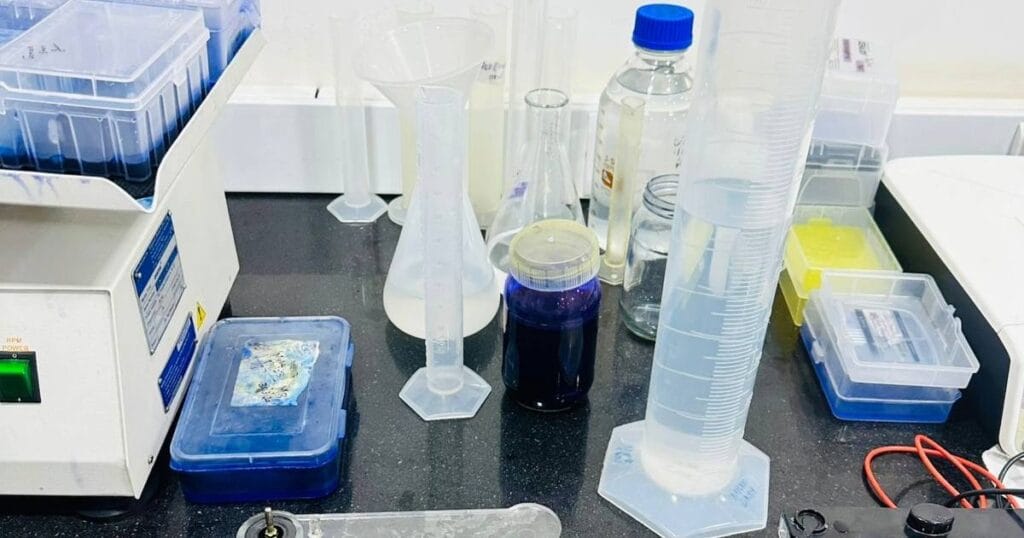
This series of multiple-choice questions in Life Sciences is designed to facilitate rigorous preparation for the CSIR-UGC NET/JRF, SLET, GATE, and similar competitive examinations. The content is systematically derived from the prescribed syllabi, with each topic comprising 25 MCQs that emphasise conceptual clarity and evaluative assessment of core biological principles.
Unit 1: MOLECULES AND THEIR INTERACTION RELEVANT TO BIOLOGY
- Atomic Structure and Chemical Bonds
- Biomolecules Structure and Key Functions
- Molecular Stabilising Forces of Biomolecules
- Biophysical Chemistry Core Concepts
- Bioenergetics and Energy Pathways
- Enzyme Kinetics and Catalysis Basics
- Protein Folding and Structure Guide
- Nucleic Acids Structure and Conformation
- Protein and DNA Stability Factors
- Carbohydrate and Lipid Metabolism
Unit 2. CELLULAR ORGANISATION
- Cell Membrane Structure and Function
- Organisation and Function of Intracellular Organelles
- Organisation of Genes and Chromosomes
- Cell Division and Cell Cycle
- Microbial Physiology and Metabolisms
Unit 3. FUNDAMENTAL PROCESSES
- DNA Replication and Repair
- DNA Replicon and Recombination
- RNA synthesis and processing
- Protein synthesis and processing
- Control of Gene Expression
Unit 4. CELL COMMUNICATION AND CELL SIGNALING
- Host-parasite interaction
- Cell signaling
- Cellular communication
- Cancer
- Innate and adaptive immune system
Unit 5. DEVELOPMENTAL BIOLOGY
- Basic concepts of development
- Gametogenesis and fertilisation
- Early Development of Plants and Animals
- Morphogenesis and organogenesis in animals
- Morphogenesis and organogenesis in plants
- Programmed cell death and senescence
- Ageing and Related Molecular Mechanisms
Unit 6. PLANT PHYSIOLOGY
- Photosynthesis
- Respiration and photorespiration
- Nitrogen metabolism in plants
- Plant hormones
- Sensory Photobiology of Plants
- Solute transport and photoassimilate translocation
- Secondary metabolites in plants
- Stress Physiology of Plants
Unit 7. SYSTEM PHYSIOLOGY – ANIMAL
- Blood and circulation
- Cardiovascular System
- Respiratory system
- Nervous system
- Sense organs
- Excretory system
- Thermoregulation
- Stress and Adaptation
- Digestive system
- Endocrinology and Reproduction
Unit 8. INHERITANCE BIOLOGY
- Mendelian principles
- Concept of gene
- Extensions of Mendelian principles
- Gene Mapping Methods
- Extra chromosomal inheritance
- Microbial genetics
- Human genetics
- Quantitative genetics
- Mutation
- Structural and numerical alterations of chromosomes
- Recombination
Unit 9. DIVERSITY OF LIFE FORMS
- Principles & methods of taxonomy
- Levels of structural organisation
- Outline Classification of Taxon
- Natural history of the Indian subcontinent
- Organisms of health & agricultural importance
- Organisms of conservation concern
Unit 10. ECOLOGICAL PRINCIPLES
- The Environment
- Habitat and Niche
- Population Ecology
- Species Interactions
- Community Ecology
- Ecological Succession
- Ecosystem Ecology
- Biogeography
- Applied Ecology
- Conservation Biology
Unit 11. EVOLUTION AND BEHAVIOUR
- Emergence of Evolutionary Thoughts
- Origin of cells and unicellular evolution
- Palaeontology and Evolutionary History
- Molecular Evolution
- The Mechanisms
- Brain, Behaviour and Evolution
Unit 12. APPLIED BIOLOGY
- Microbial fermentation and production of biomolecules
- Application of immunological principles
- Tissue and cell culture methods
- Transgenic animals and plants
- Applications of Genomics
- Bioresource and uses of biodiversity
- Breeding in plants and animals
- Bioremediation and phytoremediation
- Biosensors
Unit 13. METHODS IN BIOLOGY
- Molecular Biology methods
- Recombinant DNA methods
- Immunotechniques and Histochemical Methods
- Biophysical Methods
- Statistical Methods
- Radiolabeling techniques
- Microscopic techniques
- Electrophysiological methods
- Methods in field biology
Disclaimer:
The questions provided in this MCQ practice set serve to enhance foundational understanding and facilitate exam preparation. Answer interpretations may vary due to contextual factors, and unintentional errors in the answer key may occasionally occur. Verification from standard textbooks or reference sources is recommended. The authors are not responsible for any inaccuracies or discrepancies in the content.